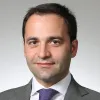"The ESM: how a public sector issuer deals with Fintech" - article in Eurofi Magazine
The ESM: how a public sector issuer deals with Fintech
Article by Kalin Anev Janse, Secretary General
European Stability Mechanism
Digitisation has been around for many years, but society has only just begun to explore the possibilities it has opened up. The next industrial revolution is now on the brink of making its impact fully felt. The operating models of businesses and public institutions stand to modernise fundamentally. In banking, the changes brought by what is now known as “Fintech” will be especially deep. Fintech has the potential to alter the nature of capital markets, the financial industry, and the behaviour of issuers and investors for good.
As the new kid on the bloc of public sector institutions, the European Stability Mechanism is right in the middle of this shift. The ESM was set up only in 2012, preceded by the European Financial Stability Facility by just two years. It does not have the systems others inherited from a long past. The ESM is a lean outfit and uses new digital technologies. ESM systems are cloud-based and we use support tools based on algorithmic data analytics. An “ESM 4.0” staff group is evaluating new digital opportunities, such as robotics.
But that is not the only reason that the ESM is looking so closely at the changes that will transform the financial world. Digitisation will make capital markets far more efficient, which could foster financial stability. Standardization of debt instruments and the way they are traded and settled, artificial intelligence, and a well-informed regulatory framework that can react fast, will all allow for more efficient markets. Such a modernisation of fixed income markets – where innovation has been largely absent since the early 1990s, especially with respect to operational and syndication processes - would fit seamlessly into the European Union’s efforts to set up a Capital Markets Union. It would promote cross-border capital flows, improve the allocation of capital and liquidity, reduce Europe’s heavy reliance on bank funding, and increase euro area economic risk-sharing. These are all important policy goals that will help the work of the ESM, which has the mandate to protect the euro area.
Moreover, the ESM is a prominent bond issuer that needs to be close to its investors. And so, we want to be prepared for the changes technology will bring. The innovations mentioned above will bring about differences in execution in the primary and secondary markets: not just for banks, but also for issuers. Competition from non-bank providers - with high digital capacities - will become stronger. We can already see banks experimenting with electronic platforms and distributed ledger technologies to distribute debt. The way public issuers sell debt to investors is bound to look very different in a number of years’ time. The ESM wants to be prepared for that new situation, whatever it may be. This is in the interest of our investors and shareholders. The ESM doesn’t want to be forced into accepting a new status quo that is sub-optimal. It wants to have a say in how its bonds are issued in the future. As a public sector institution, that is a duty towards taxpayers. And it is in line with its mandate of achieving the lowest cost for its shareholders – the 19 countries of the euro area – and for the programme countries that are receiving or have received its support.
It is to that end that the ESM has proposed setting up a European issuance platform, which would be fully in sync with the Fintech revolution. Syndicate banks would still play an important role on the platform, but that role would be non-exclusive and possibly at a lower price. First tentative discussions about the idea are now taking place. A common European platform for sovereign debt issuance would suit the many policy goals I mentioned above. It would contribute to the stability of the euro area. It would fit right in with the ESM’s mandate. And it would be true to our nature as an organisation born in the digital age.
Author

Contacts


